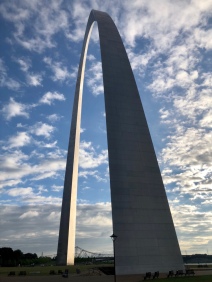
At the end of every workday in the theatre, each load-in, rehearsal, donor tour and performance the ritual remains come quitting time—rolling out the ghost light to the darkened stage before locking the doors and making for home, a late dinner or the pub. The ghost light is a safety feature of course, a light to illuminate a space filled with trap doors, rigging, cables and any number of tripping hazards on the stage.
Those of us who grew up in the theatre are both deeply superstitious and traditional. I helped to open a $100million+ concert hall with state of the art technology that could drive a spaceship, but at the end of each day the production staff rolled out a quaint metal stand with a single incandescent bulb, as was proper. The ghost light is about safety, but more importantly it is a totem of our faith in tomorrow, a beacon and a promise – our work today is done, but we will return to bring our art to live, tomorrow, and the day, week, year and decade after that.
A dark theatre is unsafe, bad luck, bad form, and bad for business. Our work is in the light, for the audience, for our communities. This has never changed since the days of Bach and Shakespeare. Days after 9/11, and probably in your town as well, Broadway theatres were open again, for that is our work, what we do, who we are as artists and artisans. We play. We perform. We inspire.
Through war, depression, down times, and good, the work goes on. Our plays, performances, exhibitions, master classes, concerts and everything else has always proceeded because THE SHOW MUST GO ON. This is universal to our industry, from the actors, singers, technicians and concessionaires. From the stagehands to the playwrights, the marketers, the box office, the custodians, the consultants. All of us.
And for now, at least, it cannot. Important, inspired, rehearsed, beautiful works being cancelled worldwide and livelihoods and careers in jeopardy. This is our darkest hour.
Are we down? We are. Are we out? We are not. Despite personal hardship, concern for health and safety, and grave a outlook for financial stability, our work continues. Online, streamed from living rooms and rooftops. Songs sung, poems read, plays produced, in your town and mine.
Our artists and organizations are creating content for the stay at home children while taking care of their own kids. They are doing beautiful, important, relevant things because this is what we do.
Will you help? Can you buy a subscription now for next year? Can you donate those tickets? Can you make a $100 gift to the performing arts organization of your choice? Will you help this industry that makes our communities vibrant, inspired, worthwhile?
The artists, singers, actors, directors, box office staff, ushers, designers, lighting technicians, stagehands, custodians, administrators, educators and their families need you. Today. It will not wait.
Please, today. Help.
The ghost light is lit for now. We will return. We must.









